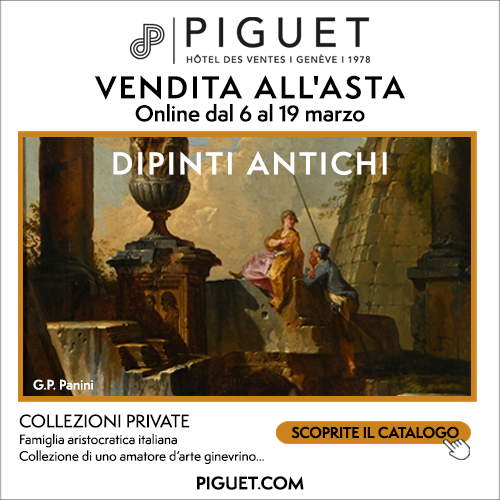The Palazzo della Carovana in Pisa: from seat of the Order of St. Stephen to Scuola Normale
“Perhaps the most beautiful spot in the city is the Piazza dei Cavalieri, with the Vasarian palace and Ugolino’s tower that now houses the grand library of the Scuola Normale. Here, far from the hasty tourists who only want to take away the image of the Leaning Tower of Pisa, the figure of the city has remained intact; the visitors who go there do not have the inebriated air of the vacation forcers and look around humanely; there are still small groups of normally dressed people talking naturally. Things still seem to have, despite everything, a soul.” These are the words with which Antonio Tabucchi described Piazza dei Cavalieri, the second most famous square in Pisa, the city where the writer was born, and trained, perfecting himself right at the Scuola Normale, and although life had taken him far and wide across Italy and then to his beloved Portugal, he managed in a few words to capture the truest soul of that place.
Even today things have not changed, although the square is only six hundred meters from the more famous Piazza dei Miracoli, it retains the intact charm of a place still genuine, spared from the most distracted tourism, and still perfectly functional to the life of the city.
Functional, as it has been for centuries: the political and civic heart of Pisa, even before it assumed the toponym by which it is known today in the height of the Renaissance, in all likelihood it was already the forum of the Roman city, but it was in the Middle Ages in particular that it played a nodal role in urban life. In the early medieval period, the city underwent urban shrinkage, and human settlements tightened around Piazza del Duomo and Piazza dei Cavalieri. The latter housed metallurgical factories and perhaps as would be inferred from the toponym by which it was known then of "old court," the curtis of the Lombard gastaldo was to be found. But it was in the Late Middle Ages, from the end of the 10th century, a period in which Pisa began to carve out a role of primary importance, that there was the first reorganization of the square, and manufacturing activities were relocated in favor of buildings with public purposes.
With the birth of the Comune and particularly in the mid-13th century, the seat of the Magistratura degli Anziani and that of the Capitano del Popolo are housed here. But to follow these and all future developments it is possible to investigate one building, which can be read to scan the entire history of the city, the Palazzo della Carovana, now the seat of the Scuola Normale and the true nerve center of the square. The structure, which today appears on the outside as it was conceived by Giorgio Vasari in the 16th century, has undergone various refunctions over time. The first body of the building would date from 1286, when it was home to the Palazzo degli Anziani, the Republic’s most important body of self-government, formed by twelve “elders,” freely elected political representatives of the city and various guilds, who were obliged to reside here.
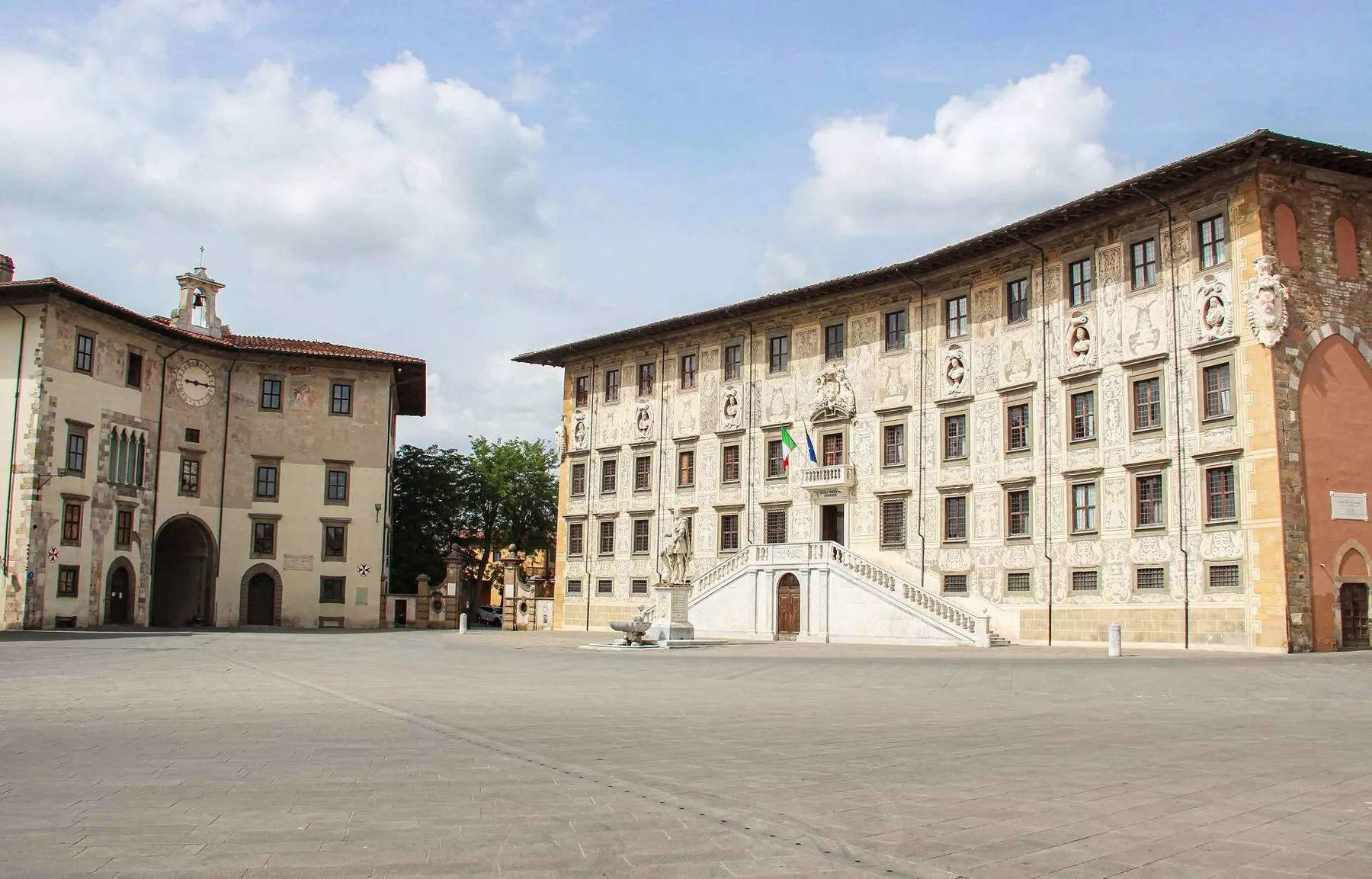



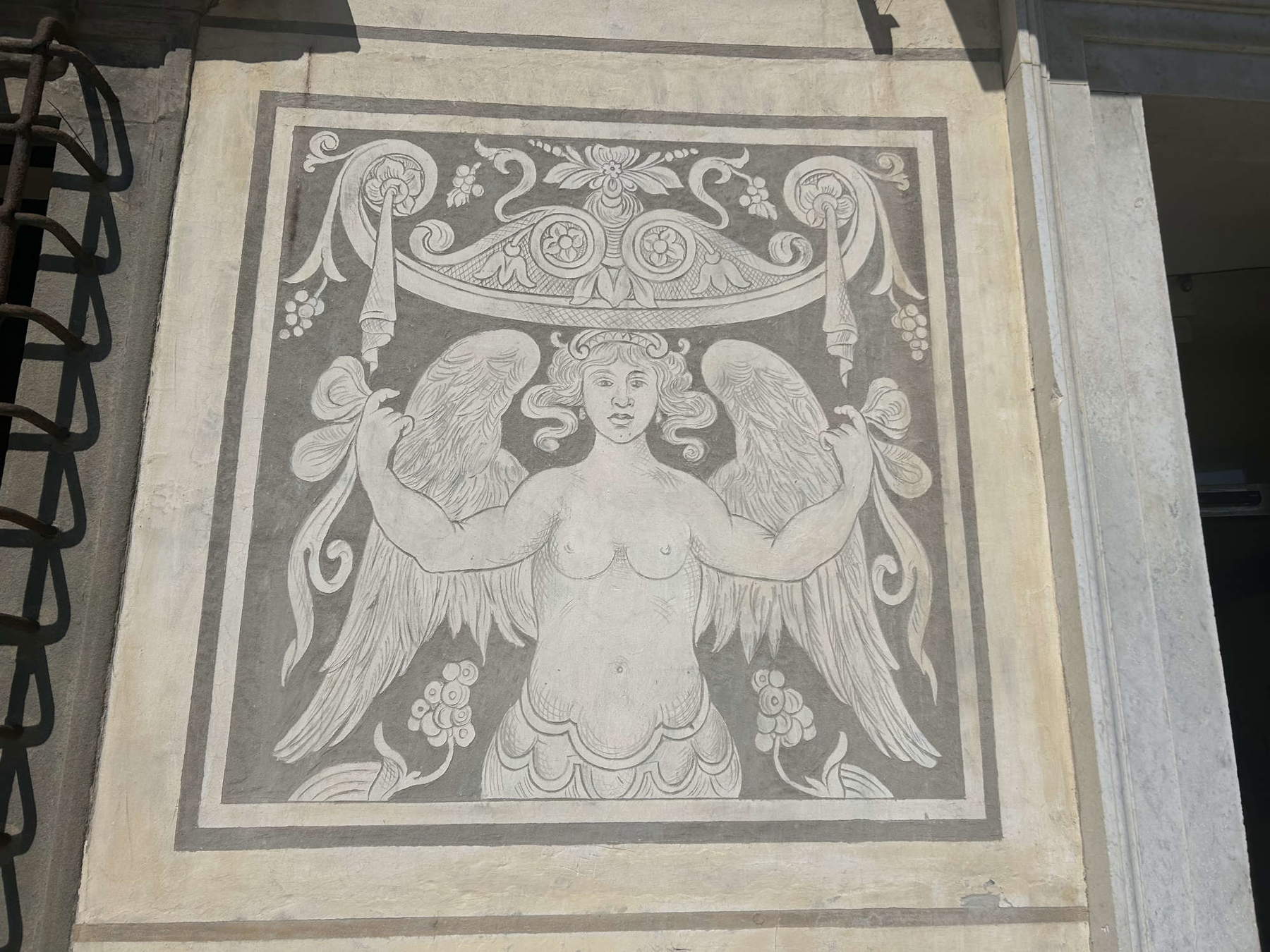

With the end of Pisan autonomy and Florentine rule over the city, the institution was suppressed and the new political bodies, first the College of Priors and then the seat of the Commissioner of Pisa, found their place in the palace. Florentine hegemony over Pisa was particularly harsh, leading to depopulation and a loss of centrality, which would persist at least until the accession to the grand ducal throne of Cosimo I dei Medici, who even if he did not implement a more liberal policy, carved out for the city a prominent role. It was decided, in fact, to make the building the seat of theOrder of the Knights of St. Stephen, a religious and chivalric order aimed at defending the faith and guarding the Mediterranean, but also functional in securing control over the Tuscan nobility.
Thus witnessed was the radical transformation of the Piazza delle Sette Vie, as it was known, and the palace, an overall project carried out by Giorgio Vasari from 1562, the real architect of the urban rearrangement completed only several decades later. In the intentions of the grand ducal court and the architect, the intention was to invest the square and the palace with new political meanings, relying on an iconography more in keeping with Florentine power, through the reuse of pre-existing structures that were, however, refounded in their aesthetics. The political nature of the operation was to transform the symbols of Pisan independence, hiding them behind those of the New Order and Medici identity.
The intervention was at the opposite extreme of what had been done for the Palazzo Vecchio in Florence, where the interiors had been given a new arrangement by transforming it into a princely residence, but the aesthetics of the city palace had been kept intact. In fact, in the Palazzo della Carovana the commitment of the new works was mainly on the outside, while the interior organization remained rather unchanged, perhaps due to a choice dictated by purely economic reasons, since Vasari’s estimate (“with three thousand [scudi] he will do what he needs”) was punctually disregarded, and prices rose by no small amount.
Vasari, therefore, conceals the external profile with a project that gives homogeneity to the previous complex formed by towers and tower-houses of different heights and battlements, regularizing the discontinuous profile with a new external syntax, entrusted by the scansion of windows framed by gray-green stone and by a sumptuous decorative pictorial apparatus executed in graffito on the facade. The painting, reworked over the centuries, is organized according to the original design into four registers: on the ground floor zodiac signs interspersed with windows probably show Cosimo I’s horoscope or allude to important events. On the second floor, on the other hand, are allegories of the liberal arts, attributes of the good knight.
On the second floor alternate deities and depictions of Cosimo’s exploits, such as the falcon clutching in its talons the shield of St. Stephen, a symbol of perseverance and continuity; the tortoise with a sail, associated with the oxymoron “festina lente” or hasten slowly; and Capricorn, Cosimo’s ascendant and the month in which he had risen to power. On the top floor other virtues, satyrs and masks, and those recognized as river deities, and then more trophies and grotesques.
The dense iconographic program is a display of the Grand Duke’s power and munificence, complemented by the busts of the Medici Grand Dukes, of whom only Gian Gastone is missing, placed on the façade over time and made by such prestigious names as Ridolfo Sirigatti, Pietro Tacca, and Giovan Battista Foggini. Adding to the complex propaganda program is the statue with fountain of Cosimo I in the guise of the Grand Master of the Order of St. Stephen ruling the seas, symbolized by the sovereign resting his feet on a dolphin, which stands in front of the grand staircase, the work of Pietro Francavilla.
The exterior is also dominated by the monumental neoclassical double-ramp entrance staircase with a strong scenic impact. This is a modern addition, installed in 1821, erected to replace the original one conceived by Vasari and which was in an extremely dilapidated condition.
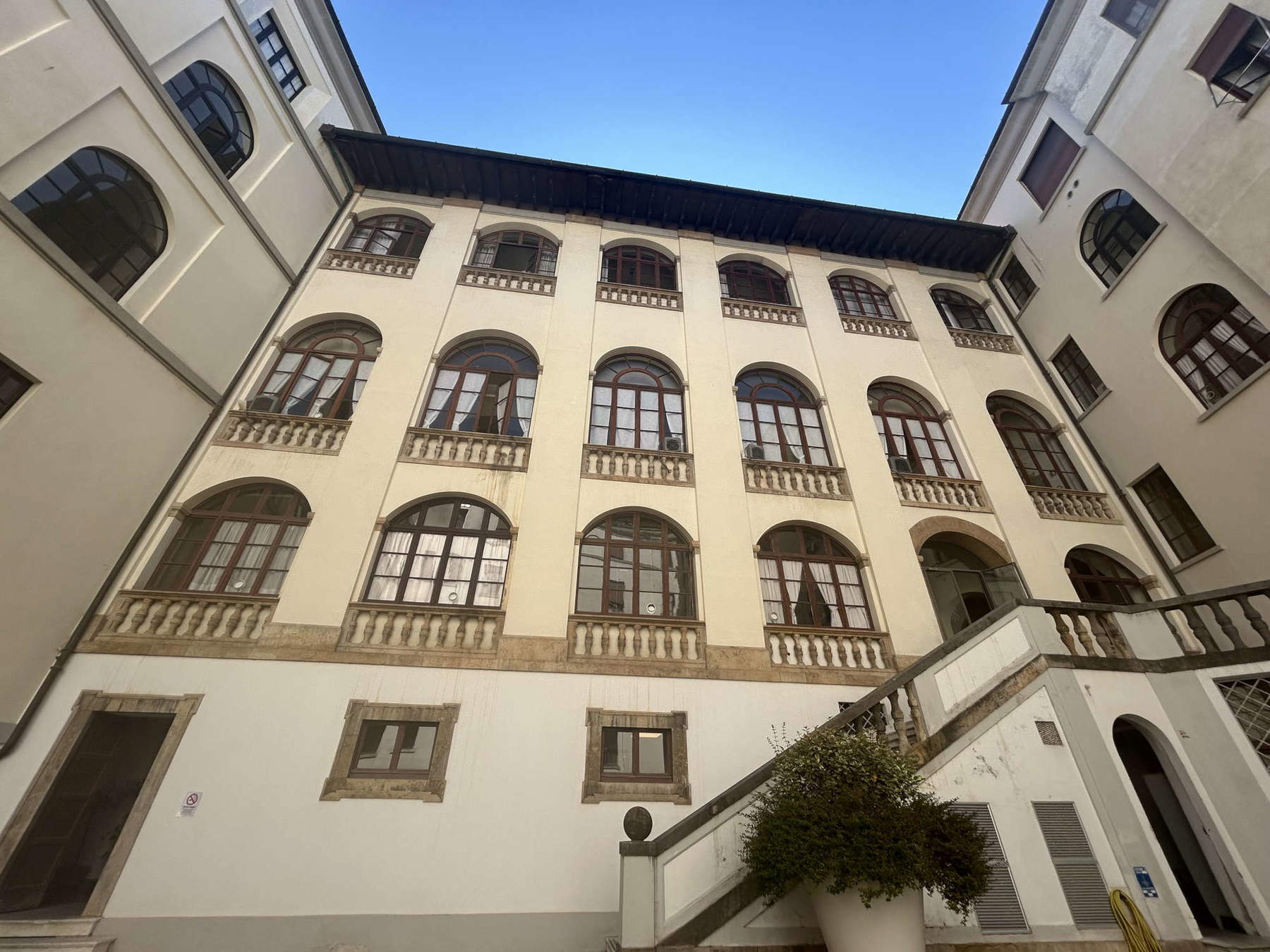
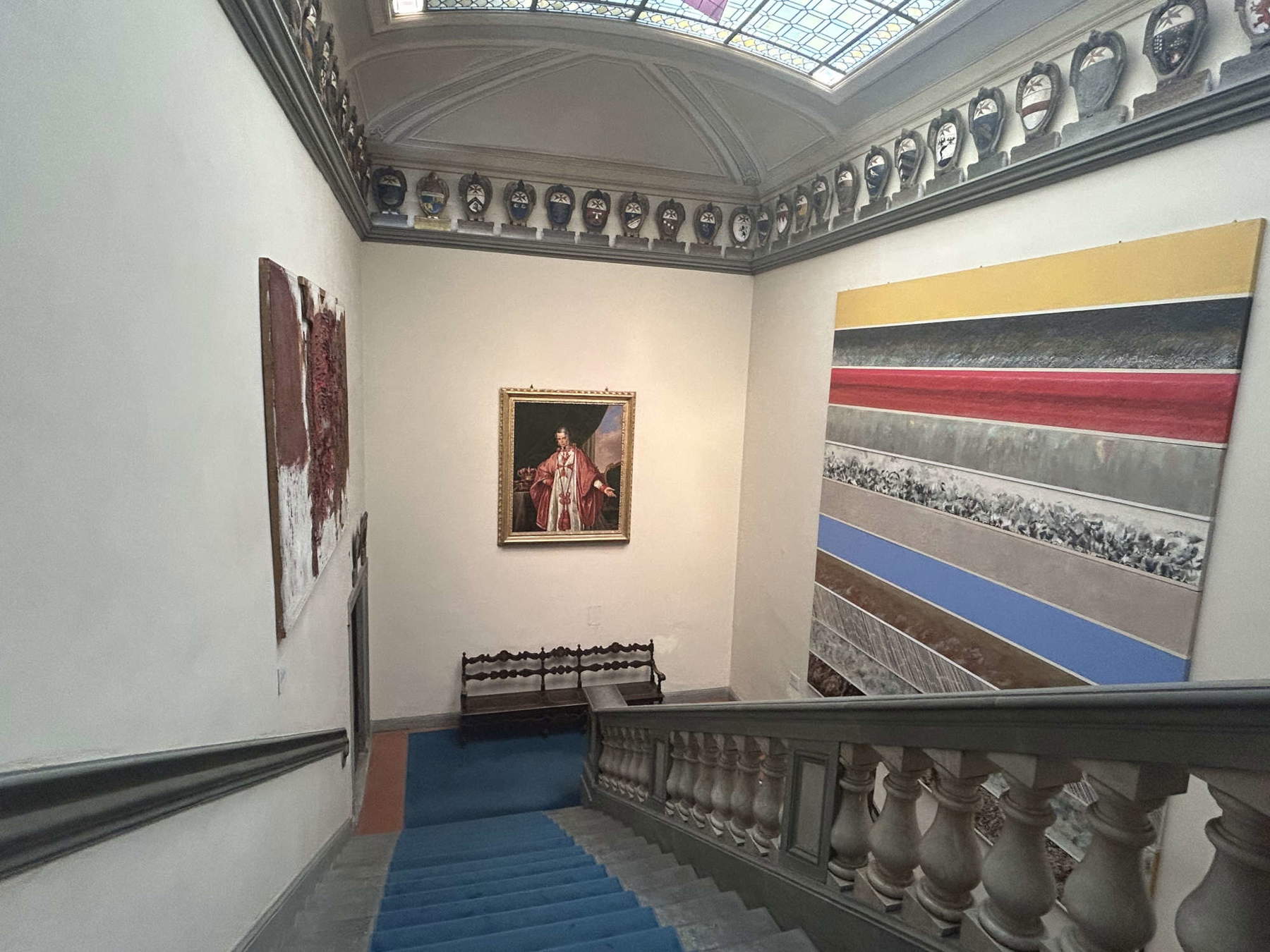
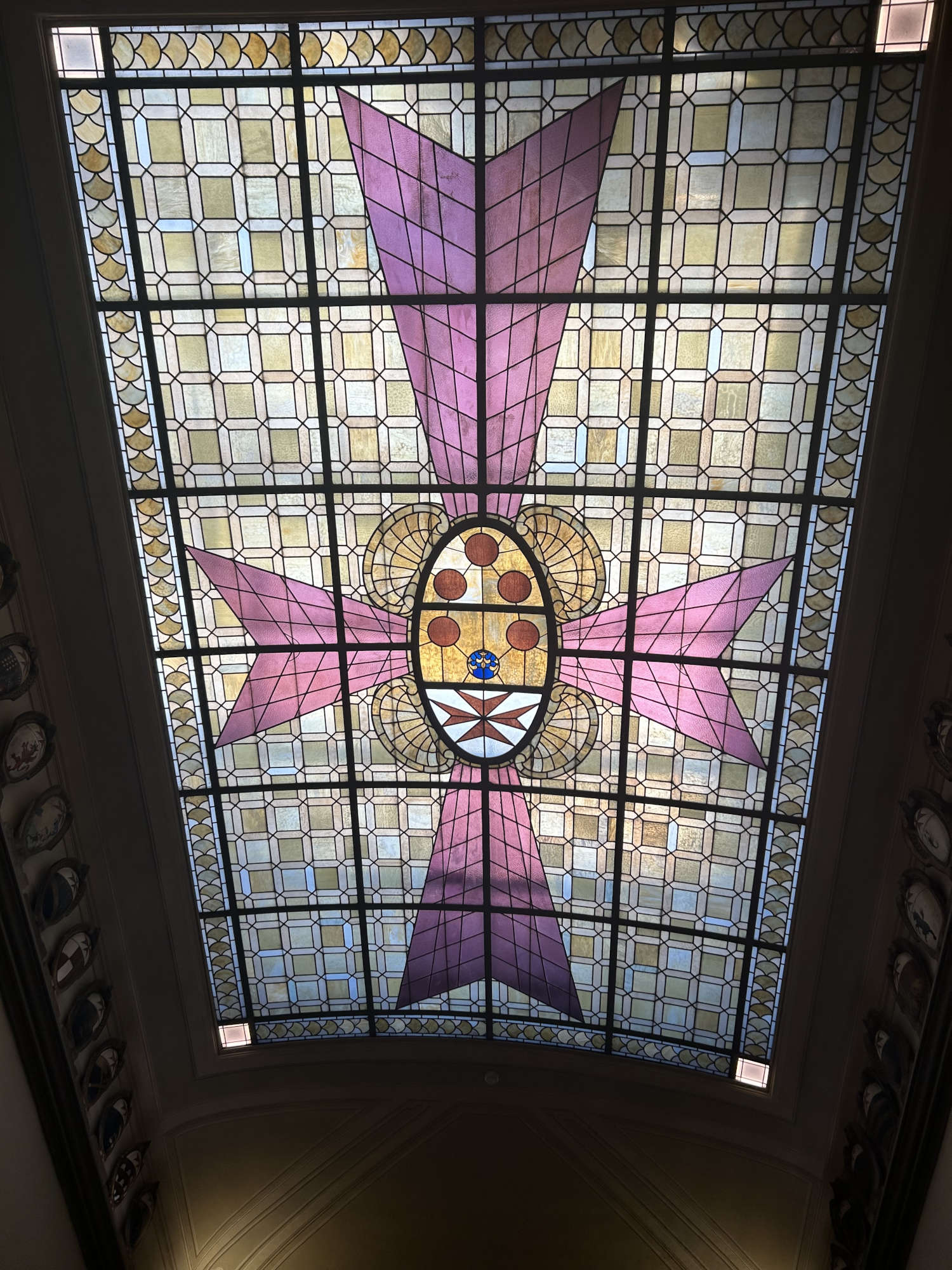

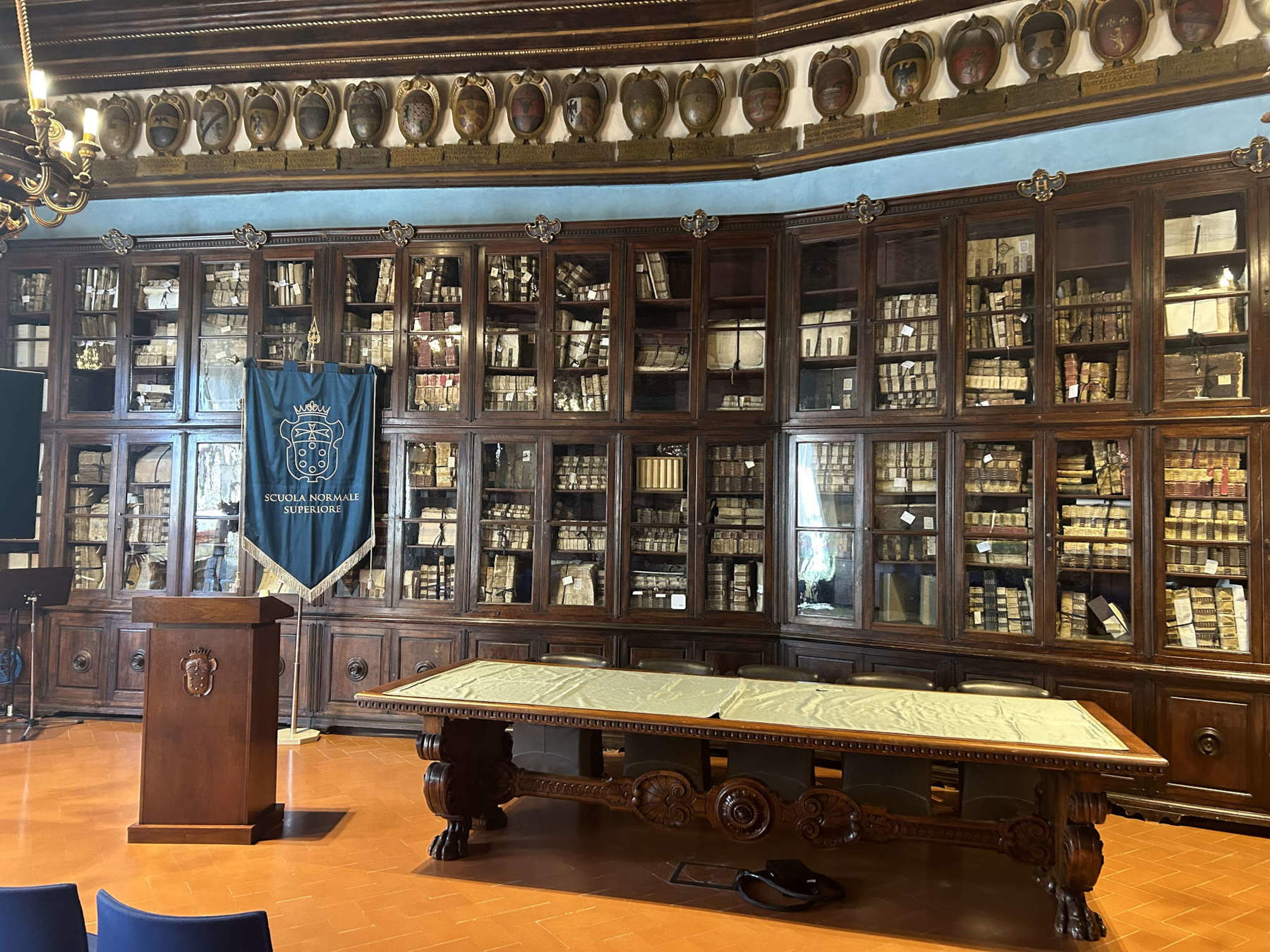
Inside, the building looks like a sedimentation of centuries and functions, dictated in part by its conversion to house the Scuola Normale Superiore. The latter traces its origins to the will of Napoleon, who in 1810 decided to establish an institution with an academic boarding school modeled after theÉcole Normale Supérieure in Paris. Initially it operated in the suppressed spaces of the convent of San Silvestro, then from 1846 it found its home in the Palace of the Caravan. Founded for the purpose of training secondary school teachers and professors, it was over the centuries reformed to become a public university high school with courses of higher education and research.
In the interiors the medieval appurtenances are still visible, and brought to light even with modern restorations, most of the spaces are organized on vertical axes, evidence of how the medieval rooms were juxtaposed and connected. The rooms have irregular profiles, in which traces of 15th-century frescoes are sometimes preserved, a legacy of the previous function. Of course, the rooms also underwent subsequent interventions, notably during the 18th century and between 1928 and 1933 by Giovanni Gentile, then head of the Scuola Normale.
The layout of the convent-inspired rooms was altered in the twentieth century with the opening of corridors, while the once-open rear loggia was closed with the eighteenth-century work. Vasari for his part concentrated his attentions in the roofing of the rooms, with coffered or vaulted ceilings, some of which are still visible.
The Palace of the Caravan takes its name from the training to which the knights were subjected, lasting three years, organized into six months, where they were trained in the liberal arts, religious values but also in athletic-military disciplines such as fencing and the practice of arms, and the remaining six months on the Stephanian galleys. The building for these reasons had an armory and some storerooms on the ground floor, while the first floor developed the reception rooms, such as the Hall of Arms and the Hall of Fencing, today the Blue Room and the Hall of Coats of Arms respectively, used for institutional meetings, conferences and seminars, and the former also contains part of historical archives, particularly the rich archives of the Florentine Salviati family. These rooms were and are surmounted by a continuous frieze that then invades the building, composed of the coats of arms of the knights who belonged to the Order. Also on the second floor were the prison and the treasury, while going up one met the apartments of the high offices of the Order.
The interiors then now house works on deposit from the Uffizi Gallery, a number of paintings by artists of the Florentine school close to Bronzino, Ghirlandaio and Vasari, as well as contemporary artworks displayed in rotation and from the Pecci Center in Prato. The combination of ancient and contemporary art that finds arrangement inside the Palazzo della Carovana, a vestige of an important history and today instead deputed to the training of young talents, continuously marks the relationship between the Italy of the past and that of the future.
Warning: the translation into English of the original Italian article was created using automatic tools. We undertake to review all articles, but we do not guarantee the total absence of inaccuracies in the translation due to the program. You can find the original by clicking on the ITA button. If you find any mistake,please contact us.






